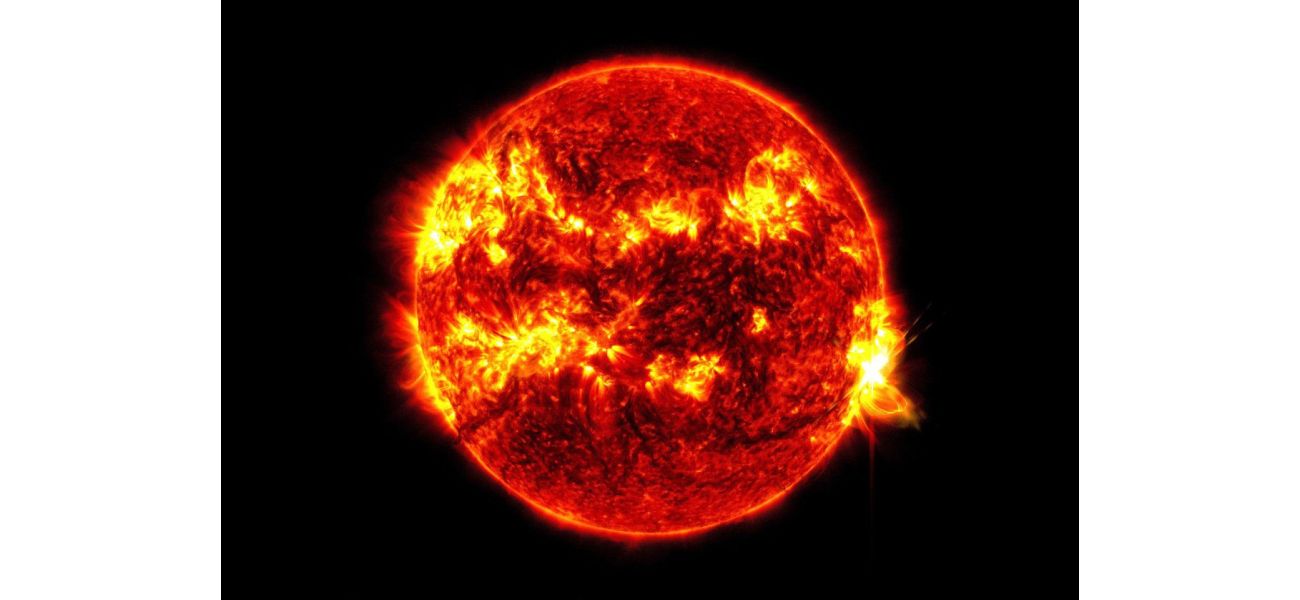Today, a powerful geomagnetic storm is expected to hit the Earth.
September 25th 2024.

On Sunday, the sun released a surge of solar plasma, hurtling towards Earth at an incredible speed of 650,000 miles per hour. While most people associate Autumn with falling leaves and pumpkin spice, scientists have their focus on solar storms. And according to meteorologists, we can expect one such storm to hit our planet today.
A solar storm, also known as a geomagnetic storm, occurs when material from the sun collides with our planet's magnetic field. This can cause major disruptions, including power outages, satellite malfunctions, and interference with GPS communications. Even astronauts in space are at risk of increased radiation exposure. The incoming solar plasma is expected to reach Earth around 5pm, right in the middle of rush hour.
Although this storm is not the most powerful one we've seen, there is still a chance it could cause some trouble. This is due to the fact that the autumn equinox occurred on Sunday, increasing the likelihood of a geomagnetic storm. American space forecasters are predicting that the storm will hit this afternoon.
Aside from causing potential problems, solar storms also have a beautiful side effect - the northern lights. These colorful natural phenomena can be seen in the night sky and were even visible in the UK last May. However, unfortunately, experts are not expecting them to make an appearance today.
The solar storm was triggered by a sunspot, a dark and cool region on the surface of the sun, which flared up on Sunday. This caused a coronal mass ejection, sending billions of tons of plasma hurtling towards our planet at an alarming speed. The sunspot, known as AR3835, has since calmed down, but not before surprising scientists with its intensity and unexpected occurrence.
In a recent report, NASA shared some incredible statistics about the sun's activity this week, including 13 M-class flares, 1 X-class flare, 27 coronal mass ejections, and 2 geomagnetic storms. The agency also shared a video from their Solar Dynamics Observatory, showcasing the week's solar activity.
Currently, the sun is producing solar winds at a speed of 490km/s. According to the Met Office, this level of activity suggests that a minor geomagnetic storm is likely to occur. The US NOAA Space Weather Prediction Center has classified the storm as "minor" in their rating system, with a G1 rating. While this is not a cause for panic, it could still affect infrastructure at high latitudes, such as phone towers and satellites.
The agency has predicted a Geomagnetic K-index of five, which is considered moderate. However, the timing of the storm is crucial. It coincides with Earth's autumnal equinox, when geomagnetic storms are more likely to occur. This is known as the Russell-McPherron effect, where the Earth's tilt causes its magnetic field to align with the sun.
In most cases, our planet's magnetosphere acts as a barrier, deflecting the sun's particles. But during the equinoxes, the alignment of the Earth's poles and the sun increases the chances of a solar storm causing disruptions. So while we may not see any northern lights today, it's important to stay aware and prepared for any potential impacts from the solar storm. Happy #SunDay!
A solar storm, also known as a geomagnetic storm, occurs when material from the sun collides with our planet's magnetic field. This can cause major disruptions, including power outages, satellite malfunctions, and interference with GPS communications. Even astronauts in space are at risk of increased radiation exposure. The incoming solar plasma is expected to reach Earth around 5pm, right in the middle of rush hour.
Although this storm is not the most powerful one we've seen, there is still a chance it could cause some trouble. This is due to the fact that the autumn equinox occurred on Sunday, increasing the likelihood of a geomagnetic storm. American space forecasters are predicting that the storm will hit this afternoon.
Aside from causing potential problems, solar storms also have a beautiful side effect - the northern lights. These colorful natural phenomena can be seen in the night sky and were even visible in the UK last May. However, unfortunately, experts are not expecting them to make an appearance today.
The solar storm was triggered by a sunspot, a dark and cool region on the surface of the sun, which flared up on Sunday. This caused a coronal mass ejection, sending billions of tons of plasma hurtling towards our planet at an alarming speed. The sunspot, known as AR3835, has since calmed down, but not before surprising scientists with its intensity and unexpected occurrence.
In a recent report, NASA shared some incredible statistics about the sun's activity this week, including 13 M-class flares, 1 X-class flare, 27 coronal mass ejections, and 2 geomagnetic storms. The agency also shared a video from their Solar Dynamics Observatory, showcasing the week's solar activity.
Currently, the sun is producing solar winds at a speed of 490km/s. According to the Met Office, this level of activity suggests that a minor geomagnetic storm is likely to occur. The US NOAA Space Weather Prediction Center has classified the storm as "minor" in their rating system, with a G1 rating. While this is not a cause for panic, it could still affect infrastructure at high latitudes, such as phone towers and satellites.
The agency has predicted a Geomagnetic K-index of five, which is considered moderate. However, the timing of the storm is crucial. It coincides with Earth's autumnal equinox, when geomagnetic storms are more likely to occur. This is known as the Russell-McPherron effect, where the Earth's tilt causes its magnetic field to align with the sun.
In most cases, our planet's magnetosphere acts as a barrier, deflecting the sun's particles. But during the equinoxes, the alignment of the Earth's poles and the sun increases the chances of a solar storm causing disruptions. So while we may not see any northern lights today, it's important to stay aware and prepared for any potential impacts from the solar storm. Happy #SunDay!
[This article has been trending online recently and has been generated with AI. Your feed is customized.]
[Generative AI is experimental.]
0
0
Submit Comment





